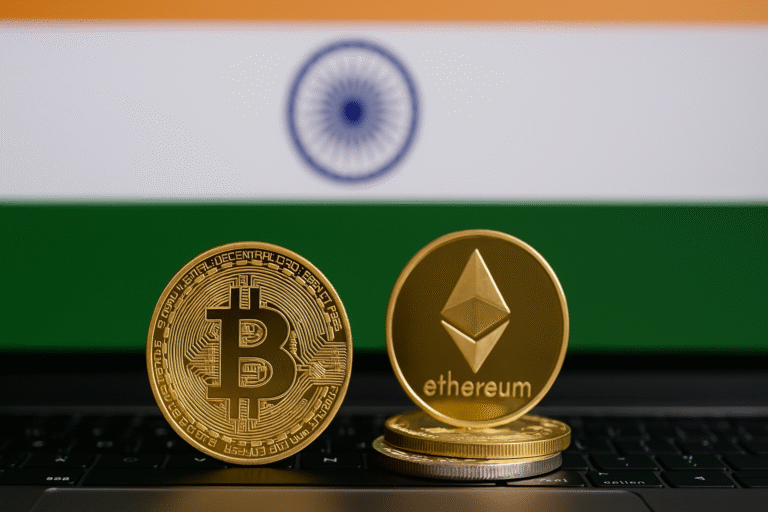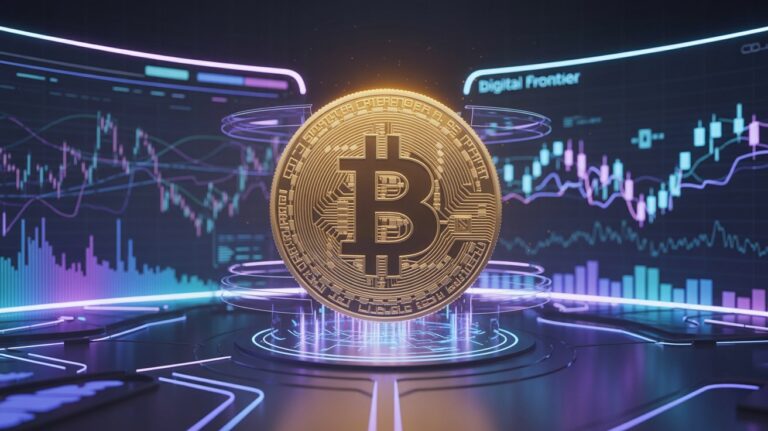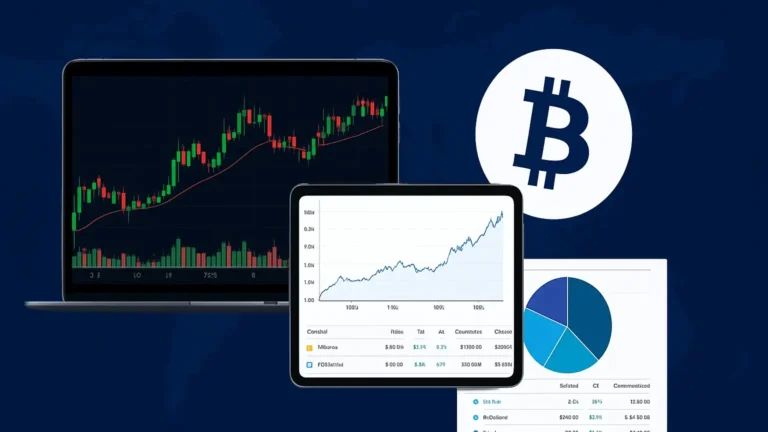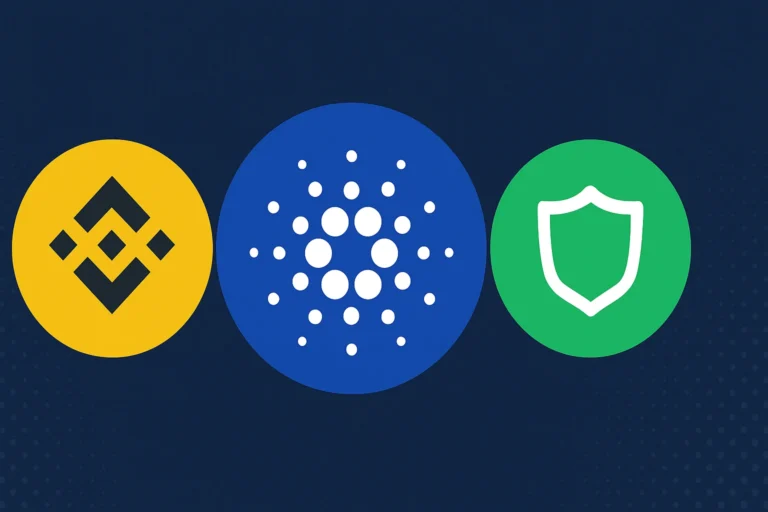Step-by-Step Guide to Buying NFTs for Beginners
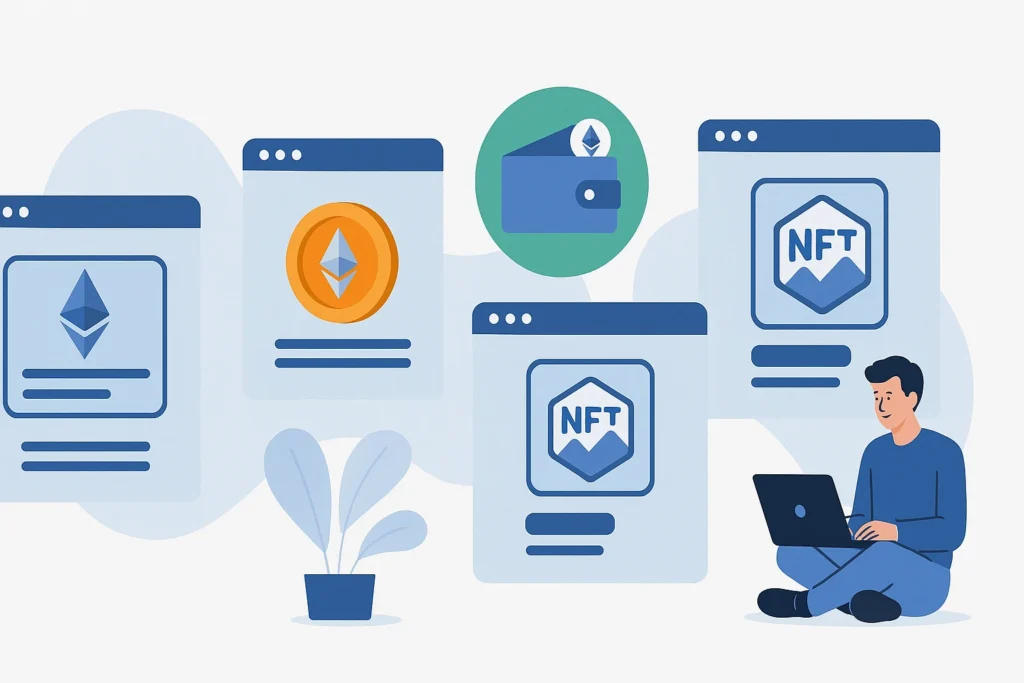
Preparing to Buy NFTs
Before buying NFTs, we need some preparation.
Setting Up a Crypto Wallet
Before you can buy your first NFT, you need a digital wallet. This wallet holds your cryptocurrency (usually Ethereum or Solana) and will also be the place where your NFTs live after purchase.
Think of it like a digital bank account, but tailored for Web3.
A crypto wallet allows you to interact with NFT marketplaces and manage your digital assets. There are two main types: custodial and non-custodial.
Custodial wallets are managed by third parties (like Coinbase Wallet), while non-custodial wallets (like MetaMask) give you full control—but also full responsibility.
Best Wallets for NFTs
- MetaMask – The most popular wallet for Ethereum-based NFTs. It works as a browser extension and mobile app.
- Coinbase Wallet – User-friendly and beginner-oriented with great support.
- Phantom – Ideal for Solana-based NFTs, very intuitive.
- Trust Wallet – Supports a wide range of blockchains and is mobile-friendly.
How to Secure Your Wallet
Security is paramount. If someone gets access to your wallet, they can steal your funds and NFTs. Always write down your seed phrase (a string of 12–24 words) and store it somewhere safe—never online.
Use two-factor authentication (2FA) when possible, and avoid sharing wallet details on public forums. Be wary of scams or phishing attempts that ask you to connect your wallet or input your seed phrase. Treat your wallet like your bank—because in Web3, it is.
Choosing a Cryptocurrency
To buy NFTs, you’ll need cryptocurrency. Ethereum is the most commonly used, especially on major platforms like OpenSea or Rarible. However, other blockchains like Solana, Polygon, and Tezos are gaining traction thanks to lower fees and faster transactions.
Popular Cryptocurrencies for NFTs
- Ethereum (ETH): Most widely accepted but has higher gas fees.
- Solana (SOL): Fast and cost-effective, popular for NFT games and collectibles.
- Polygon (MATIC): Built on Ethereum but with much lower fees.
- Tezos (XTZ): Eco-friendly and supports affordable NFT art.
To get started, sign up on a cryptocurrency exchange like Coinbase, Binance, or Kraken. Buy the needed crypto, then transfer it to your wallet. Make sure to leave a small amount for transaction fees.
Choosing the Right NFT Marketplace
Top NFT Marketplaces
Once your wallet is ready and loaded with crypto, the next step is picking a marketplace to explore and buy NFTs.
There are many NFT platforms, each with unique features, blockchain support, and user experiences. Your choice depends on the type of NFTs you’re interested in, the blockchain you’re using, and the kind of community or creator you’re supporting.
Let’s break down the most popular NFT marketplaces:
OpenSea
OpenSea is the largest and most recognized NFT marketplace. Built on Ethereum, it supports Ethereum, Polygon, and Klaytn blockchains.
You can find everything from art and collectibles to domain names and music NFTs. OpenSea has a user-friendly interface and is ideal for beginners.
Pros:
- Huge variety of NFTs
- Easy wallet integration (MetaMask, Coinbase, etc.)
- Polygon support for low-fee transactions
Cons:
- Can be overwhelming due to the sheer number of listings
- Ethereum gas fees can be high
Rarible
Rarible is a decentralized, community-owned platform where users can mint, buy, and sell NFTs. It supports Ethereum, Flow, and Tezos blockchains, making it more diverse in terms of blockchain compatibility.
Pros:
- Multi-chain support
- Clean UI for artists and buyers
- Voting power for token holders (RARI)
Cons:
- Smaller user base than OpenSea
- Somewhat less intuitive for newcomers
Magic Eden
Magic Eden is a powerhouse in the Solana NFT world. It focuses heavily on community and gaming NFTs, making it ideal for collectors interested in digital games and metaverse projects.
Pros:
- Super low transaction fees
- Fast and smooth interface
- Strong community projects
Cons:
- Mostly focused on Solana-based NFTs
- Smaller collection diversity compared to OpenSea
Each platform has its strengths, so the “best” depends on your needs. Ethereum-based sites like OpenSea and Rarible are great for blue-chip NFT art. Solana platforms like Magic Eden are better for gaming and fast-paced NFT flips.
Factors to Consider Before Choosing a Platform
Before jumping into any NFT marketplace, keep a few factors in mind to make sure you’re making smart and safe choices:
- Blockchain Compatibility – Ensure the platform supports the blockchain your wallet uses. For example, don’t bring ETH to a Solana-based site.
- Gas Fees – Some marketplaces have high gas fees, especially those on Ethereum. Check if there’s a layer-2 solution (like Polygon) for cheaper transactions.
- User Interface – Go with platforms that are easy to navigate, especially if you’re new. A confusing UI can lead to mistakes.
- Verification and Trust – Look for verified creators or collections. This reduces the chance of buying a fake or duplicated NFT.
- Community and Reviews – Join community groups (like Discord or Twitter) related to the platform. Reviews from other users can give insight into the platform’s reputation and security.
Doing this groundwork saves time and prevents costly errors. Think of the marketplace as your gallery—it needs to be safe, authentic, and trustworthy before you hang your first digital masterpiece.
Finding the Right NFT to Buy
Types of NFTs
Now that you’ve got the wallet, crypto, and marketplace ready, the fun begins—choosing your first NFT. NFTs come in a dazzling variety, and each category has its own appeal.
Your choice will depend on your interests: are you looking to collect, invest, or simply enjoy some cool digital assets?
Let’s go over some of the most popular types of NFTs:
Art
NFT art has taken the world by storm. From digital illustrations to algorithmically generated pieces, this is one of the most prominent categories in the NFT space.
Collectors love art NFTs for their uniqueness and visual appeal. Some high-end NFT art has been sold in major auction houses like Christie’s and Sotheby’s.
Look for:
- Verified artists or collections
- One-of-one editions or limited releases
- Strong backstories or artistic statements
Music
Music NFTs are changing how artists release and monetize their work. Instead of going through record labels, musicians can sell their songs directly to fans as NFTs.
Buyers get access to digital albums, unreleased tracks, concert tickets, or even royalty shares.
Look for:
- Artists with an existing following
- Projects that offer extra perks or access
- Rights and licensing terms
Collectibles
This includes trading cards, avatars (like Bored Apes), and digital pets. Many of these projects come with rarity tiers and traits that influence value.
Some collectibles have strong communities and even integrate into games or the metaverse.
Look for:
- Rarity levels (common vs. legendary traits)
- Historical significance (was it early in the NFT timeline?)
- Strong fanbase or community involvement
Gaming and Metaverse Assets
NFTs in games and metaverses allow you to own land, weapons, skins, or characters. These assets are usable in gameplay, which adds real utility.
Projects like Decentraland, The Sandbox, and Axie Infinity dominate this space.
Look for:
- In-game utility
- Development team and roadmap
- Active player base
Exploring these categories helps you find something that resonates. Don’t rush—browse, join discussions, and understand what makes a good buy.
Researching Creators and Projects
Before buying any NFT, do some homework. The market is full of hype, and not every shiny object is gold.
Many buyers make the mistake of purchasing NFTs just because they’re trending—only to find out later the project has no real value or community support.
Here’s how to research:
- Check the Creator’s History – Look at their past work, social media presence, and collaborations. A reputable creator usually has a solid digital footprint.
- Review the Project Roadmap – Good projects outline their goals, community plans, and future utility. If there’s no clear roadmap, think twice.
- Engage With the Community – Join the Discord server or Twitter spaces. See if the project has real community engagement or if it’s just bots and spam.
- Evaluate the Artwork or Concept – Does it offer something unique? Does the visual or concept stand out from the rest?
- Watch for Red Flags – Anonymous teams with no track record, overly hyped promises, or sudden spikes in activity could signal a rug pull.
In short, approach buying NFTs like you would invest in a startup. You’re not just buying art—you’re buying into a vision, community, and future.
Step-by-Step Guide to Buying NFTs for Beginners
Step-by-Step Guide to Buying Your First NFT
You’ve done your homework, picked a marketplace, and found an NFT that speaks to you—now it’s time to make the actual purchase.
Here’s a clear, step-by-step breakdown of how to go from browsing to owning:
- Connect Your Wallet
Go to the NFT listing on the marketplace. Most platforms will have a “Connect Wallet” button at the top-right corner. Click it and choose your wallet type (MetaMask, Phantom, Coinbase Wallet, etc.). A pop-up will appear asking you to approve the connection—click “Confirm.” - Verify Network Settings
Make sure you’re on the right blockchain network (Ethereum, Solana, Polygon, etc.) in your wallet. This ensures your transaction doesn’t fail or get stuck. - Check NFT Details
Double-check the item details. Confirm it’s from a verified collection, look at its rarity traits, and review the price. Pay attention to transaction or gas fees—it’s easy to overlook them but they can be substantial. - Click “Buy Now” or “Make Offer”
Some NFTs have fixed prices, while others are open for offers. Click “Buy Now” if you’re happy with the price, or “Make Offer” to propose a different one. - Approve the Transaction
Your wallet will pop up asking for confirmation. This screen shows the total cost (including gas fees). Approve it to complete the transaction. - Transaction Confirmation
The blockchain takes a few seconds (or minutes) to confirm your purchase. Once it’s done, the NFT will show up in your wallet or your profile on the marketplace. - View Your NFT
Go to your profile to see your newly purchased NFT. You now officially own it—congrats!
This process becomes second nature after a few purchases. But your first time? Go slow, double-check everything, and don’t rush. One small misclick can mean lost funds or buying the wrong item.
Storing and Managing Your NFTs
Where Are NFTs Stored?
Many beginners assume NFTs are stored directly in your wallet, but that’s not technically true. What your wallet holds is a key that points to your NFT on the blockchain.
The actual media (art, music, etc.) is typically stored off-chain on platforms like IPFS (InterPlanetary File System), though ownership and metadata are stored on-chain.
You can view and manage your NFTs directly through your wallet dashboard or marketplace profile. Some wallets like MetaMask don’t display NFTs by default—you may need to use tools like OpenSea or Rainbow Wallet for visual access.
Tips for Safe NFT Storage
- Use a Hardware Wallet
Consider moving valuable NFTs to a cold storage wallet like Ledger or Trezor. This adds an extra layer of security against hacks. - Enable 2FA Where Possible
If you’re using a custodial wallet (like Coinbase Wallet), turn on two-factor authentication for added safety. - Never Share Your Seed Phrase
This is the golden rule. No legitimate platform or person will ever ask for your seed phrase. Sharing it equals giving full access to your wallet. - Keep Backup Copies Offline
Write down your seed phrase and store it offline in a safe place. If you lose your wallet or your computer dies, you’ll still be able to recover your NFTs.
Managing your NFTs responsibly ensures you don’t just buy an asset—you keep it protected. Think of your NFTs like expensive jewelry. You wouldn’t leave them lying around, right?
Selling or Flipping NFTs
How to List NFTs for Sale
Ready to turn your digital treasure into a potential profit? Here’s how to resell an NFT:
- Go to Your Profile or Wallet
Navigate to the NFT you want to sell. Click on the NFT to open its detailed page. - Click “Sell” or “List for Sale”
Enter your asking price and select your preferred currency (ETH, SOL, MATIC, etc.). - Choose Sale Type
- Fixed Price: Buyers can purchase immediately.
- Timed Auction: The highest bidder wins after a certain time.
- Reserve Auction: Starts once someone makes the minimum bid.
- Confirm Listing Fees
Depending on the marketplace and blockchain, you might need to pay a one-time approval fee or gas fee to list your NFT. - Confirm via Wallet
Approve the listing through your wallet. Your NFT is now live and available for buyers.
Tips for Successful Flipping
- Buy Low, Sell High: Sounds obvious, but it’s the core strategy. Look for underpriced NFTs in promising projects.
- Time the Market: Sell during hype cycles or when a project trends on Twitter or Discord.
- Check Floor Price Trends: The floor price is the lowest-priced NFT in a collection. Tracking its rise or fall helps you decide the right time to sell.
- Watch for Gas Spikes: If Ethereum gas fees are high, wait to list—otherwise your profit margin shrinks.
Selling NFTs is a balancing act between timing, pricing, and understanding your market. Some NFTs skyrocket in value, while others dip quickly. Do your research and keep emotions in check.
Common Mistakes to Avoid
Even seasoned NFT collectors make errors, but beginners are more likely to trip over basic things. Avoid these pitfalls:
- FOMO Buying
Fear Of Missing Out is real in NFT land. Don’t buy something just because it’s trending. Always do your due diligence. - Ignoring Fees
High gas or transaction fees can make a seemingly cheap NFT expensive. Always factor in these costs before confirming. - Falling for Scams
If it sounds too good to be true, it probably is. Don’t click random links on Twitter or Discord. Scammers often impersonate big-name creators or projects. - Neglecting Community
A project with no community often lacks value or longevity. The buzz isn’t everything, but an engaged, active community adds legitimacy. - Using the Wrong Blockchain
Sending ETH to a Solana wallet (or vice versa) means those funds are lost forever. Always double-check blockchain compatibility.
Being cautious and patient in the early days of your NFT journey saves you from costly mistakes. Your digital wallet—and your future self—will thank you.
Staying Updated in the NFT Space
Why Staying Informed Is Crucial
The NFT landscape evolves at lightning speed. New tools, platforms, trends, and technologies emerge almost daily. To keep up and make informed buying or selling decisions, staying connected to the community is non-negotiable.
Best Ways to Stay Informed
- Twitter (X) – Follow NFT creators, collectors, and analysts. It’s the go-to hub for real-time updates.
- Discord Servers – Many NFT projects have their own servers. Great for insider info, drops, and interacting with the devs.
- Newsletters & Blogs – Subscribe to sites like NFT Now, The Defiant, or Bankless.
- YouTube & Podcasts – Creators like Gary Vee, EllioTrades, or The Nifty Alpha deliver regular NFT content.
Recommended Tools
- Rarity.tools – Discover rarity scores of NFTs.
- DappRadar – Analyze NFT platforms and wallet activity.
- Nansen – Advanced tool for tracking smart money in NFTs.
Knowledge is power. In the world of NFTs, staying current isn’t optional—it’s essential to stay profitable and safe.
Future of NFTs: What’s Next?
Trends and Innovations to Watch
NFTs are still in their early days, and what we’ve seen so far is just the beginning. As the space matures, it’s clear that NFTs will evolve far beyond just art and collectibles.
We’re talking about real-world use cases, utility, and next-gen experiences that will change how we think about ownership and access.
Real-World Asset Tokenization
One of the most exciting developments is tokenizing real-world assets like real estate, stocks, and even luxury goods.
This allows people to buy and sell fractional ownership in high-value items using NFTs. Imagine owning a slice of a building in Manhattan or a rare Rolex—without needing to buy the entire asset.
NFTs in Gaming and the Metaverse
Play-to-earn games and digital worlds like The Sandbox and Decentraland are just the tip of the iceberg.
Soon, in-game items, skins, and avatars will be fully owned by players as NFTs. You’ll be able to use or sell them across different games and platforms, creating a unified digital economy.
Identity and Access Passes
NFTs will soon serve as digital ID cards, concert tickets, event passes, and exclusive memberships. Some already do. Projects like VeeFriends offer conference access, while others unlock real-world perks like merchandise or consultations with the creators.
AI and Generative NFTs
AI-generated art is gaining steam. Collections like Art Blocks use algorithms to create stunning, one-of-a-kind pieces that are minted directly on-chain. As AI tech improves, so will the creative possibilities of NFTs.
The future is decentralized, creative, and powered by NFTs. We’re only scratching the surface, and being early means you’re part of shaping that future.
Conclusion
Buying NFTs can feel like stepping into a futuristic maze—but once you break it down, it’s really just about understanding a few key steps.
Start by learning the basics of NFTs and blockchain, then get your wallet and crypto ready. Explore different marketplaces and do your research before making any purchase. Avoid common pitfalls, engage with the community, and always keep your assets secure.
Whether you’re in it for the art, the profit, or the tech, NFTs offer a whole new way to interact with the digital world. And who knows? That first NFT could be the beginning of something much bigger—a collection, a community, or even a new career path.
Take your time, do your research, and dive in. The NFT world is waiting for you. I hope you liked this Step-by-Step Guide to Buying NFTs for Beginners information
FAQs
1. Do I need to be a tech expert to buy NFTs?
Nope! While understanding the basics of crypto and wallets helps, many platforms are now beginner-friendly. Just follow a solid step-by-step guide (like this one), and you’ll be fine.
2. Can I lose money buying NFTs?
Yes. Like any investment, NFTs carry risk. Prices can drop, and not all projects succeed. Only invest what you’re willing to lose and always do your homework.
3. What if I lose access to my crypto wallet?
If you lose your wallet and your seed phrase, your assets—including NFTs—are gone for good. Always back up your seed phrase offline in a safe place.
4. Are all NFTs expensive?
Not at all. You can find NFTs for a few dollars, especially on blockchains like Polygon or Solana. It’s not just about big-money art sales.
5. Can I create and sell my own NFTs?
Absolutely. Many platforms like OpenSea and Rarible let you mint your own NFTs. You’ll need a wallet, some crypto for gas fees, and your digital creation.
Contents
- 1 Preparing to Buy NFTs
- 2 Choosing the Right NFT Marketplace
- 3 Finding the Right NFT to Buy
- 4 Step-by-Step Guide to Buying NFTs for Beginners
- 5 Storing and Managing Your NFTs
- 6 Selling or Flipping NFTs
- 7 Common Mistakes to Avoid
- 8 Staying Updated in the NFT Space
- 9 Future of NFTs: What’s Next?
- 10 Conclusion
- 11 FAQs

